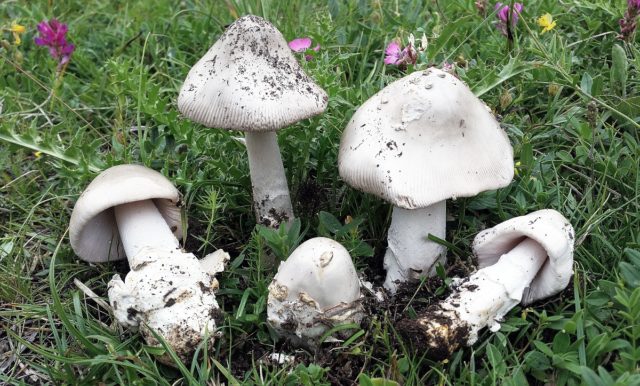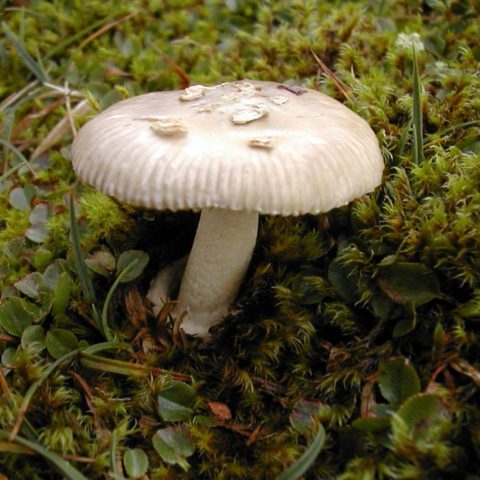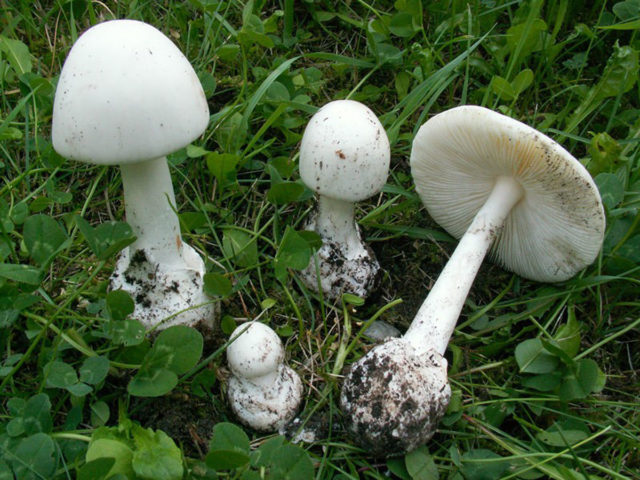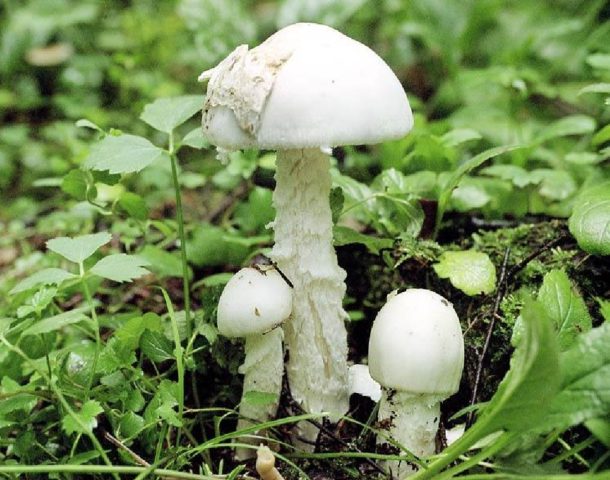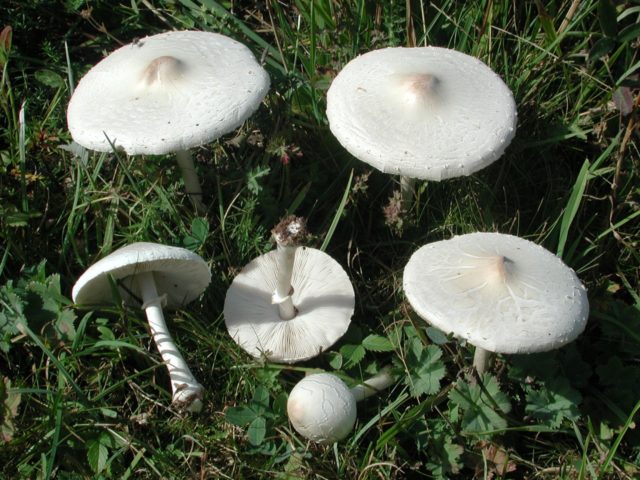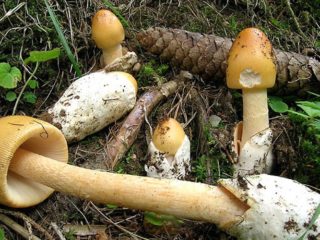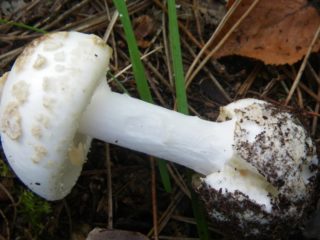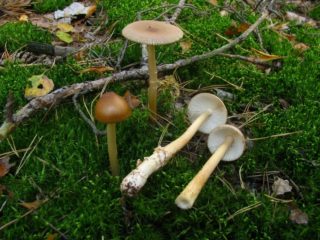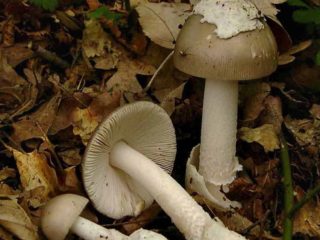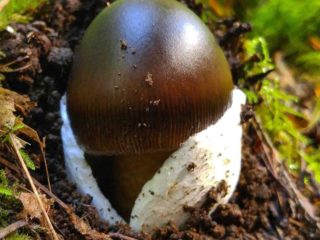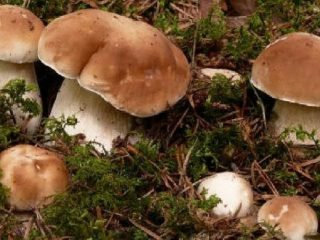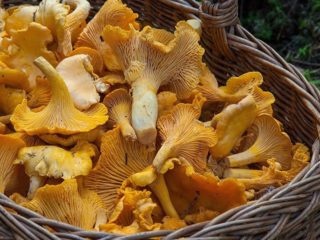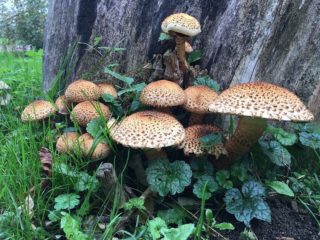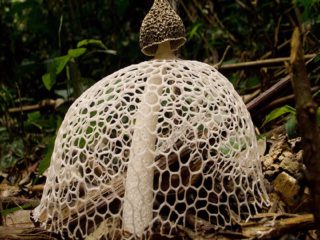Content
The snow-white float is a representative of the Amanitovye family, the genus Amanita. It is a rare specimen, therefore, little studied. Most often found in deciduous and mixed forests, as well as in mountainous areas. It is a fruiting body, which consists of a cap and a whitish stem. Details of this instance are set out below.
Description of the snow-white float
The pulp is white; if damaged, the color remains unchanged. On the fruiting body of the snow-white float, you can see the remains of a blanket, which is a bag-shaped and wide volva. The spores are round and smooth to the touch; the spore powder is white. The plates are frequent and free, noticeably widening towards the edges of the cap. Most often, they are very narrow near the stem, but the sizes of the plates can be different. Has no pronounced taste and smell.
Description of the hat
At a young age, the cap has a bell-shaped shape, then it will become convex or convex-outstretched with a well-defined tubercle in the center. Its size varies from 3 to 7 cm in diameter. The surface is white, light ocher in the middle. Some young specimens may develop temporary white flakes. The edges of the cap are uneven and thin, and its central part is rather fleshy.
Leg description
This specimen has a cylindrical stem, slightly widened at the base. Its length reaches about 8-10 cm, and its width varies from 1 to 1.5 cm in diameter. The ring near the leg, which is typical for many gifts of the forest, is missing.
At the stage of maturation, it is quite dense, however, as it grows, cavities and voids are formed in it. Initially, the leg is painted in a whitish color, but with age it darkens and takes on a grayish tint.
Where and how it grows
Despite the fact that the snow-white float is considered a rare specimen, it can be found in almost every corner of the world, perhaps, except for Antarctica. The favorite place for this species is broad-leaved and mixed forests, as well as mountainous terrain. However, for development, the snow-white float prefers mountains no higher than 1200 m.
The best time for fruiting is from July to October. The snow-white float has been spotted in Russia, Europe, Ukraine, China, Asia and Kazakhstan.
Is the mushroom edible or not
The snow-white float is classified as conditionally edible mushrooms. Due to the fact that this species is poorly studied, there are other assumptions. For example, some reference books say that it is inedible, while others claim that this species is poisonous. It has no special nutritional value.
Doubles and their differences
The snow-white float has a fairly common appearance, therefore it is very similar to various varieties of mushrooms, including poisonous ones. The following examples can be attributed to doubles:
- White float - is similar to snow-white not only in name, but also in appearance, which sometimes leads to confusion. Belongs to the same genus as the snow-white float. In youth it has an ovoid shape, gradually turns into a prostrate. The pulp is white, it does not change if damaged.Smell and taste are neutral, belongs to the category of conditionally edible mushrooms. Unlike the snow-white, the double is widespread both in Russia and abroad. Prefers deciduous forests with the presence of birch.
- Stinky fly agaric - has a regular-shaped hat and a thin leg, like the species in question. In common parlance, it is called the white toadstool, it is a poisonous mushroom. The difference from the snow-white float is the presence of a white ring on the leg, which immediately catches the eye. In addition, the poisonous representative of the forest gives off a special secret, it accumulates on the surface of the cap and exudes an unpleasant fetid odor.
- Mushroom umbrella white - edible, widespread in Europe, Siberia, the Far East and Asia. A characteristic feature of this specimen is a thick fleshy cap with a diameter of 6-12 cm. The surface of the cap can be not only whitish, but also beige with strewn with small scales. As a rule, it grows in steppes, in clearings and pastures, in open areas of coniferous and mixed forests.
Conclusion
The snow-white float is a rare species belonging to the category of conditionally edible mushrooms. This means that eating is allowed, but only after proper pre-cooking and with extreme caution. In addition, it is worth remembering that this specimen has similarities with poisonous species, which, when used for food, can cause severe poisoning. To avoid such troubles, you should not pick mushrooms that cause even the slightest doubt.
